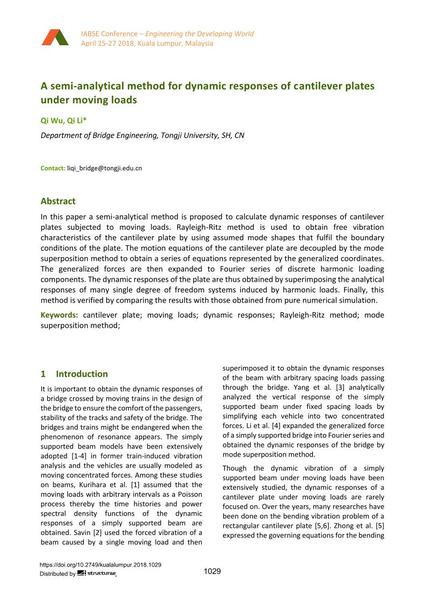A semi-analytical method for dynamic responses of cantilever plates under moving loads

|
|
|||||||||||
Détails bibliographiques
| Auteur(s): |
Qi Wu
(Department of Bridge Engineering, Tongji University, SH, CN)
Qi Li (Department of Bridge Engineering, Tongji University, SH, CN) |
||||
|---|---|---|---|---|---|
| Médium: | papier de conférence | ||||
| Langue(s): | anglais | ||||
| Conférence: | IABSE Conference: Engineering the Developing World, Kuala Lumpur, Malaysia, 25-27 April 2018 | ||||
| Publié dans: | IABSE Conference Kuala Lumpur 2018 | ||||
|
|||||
| Page(s): | 1029-1036 | ||||
| Nombre total de pages (du PDF): | 8 | ||||
| DOI: | 10.2749/kualalumpur.2018.1029 | ||||
| Abstrait: |
In this paper a semi-analytical method is proposed to calculate dynamic responses of cantilever plates subjected to moving loads. Rayleigh-Ritz method is used to obtain free vibration characteristics of the cantilever plate by using assumed mode shapes that fulfil the boundary conditions of the plate. The motion equations of the cantilever plate are decoupled by the mode superposition method to obtain a series of equations represented by the generalized coordinates. The generalized forces are then expanded to Fourier series of discrete harmonic loading components. The dynamic responses of the plate are thus obtained by superimposing the analytical responses of many single degree of freedom systems induced by harmonic loads. Finally, this method is verified by comparing the results with those obtained from pure numerical simulation. |
||||
